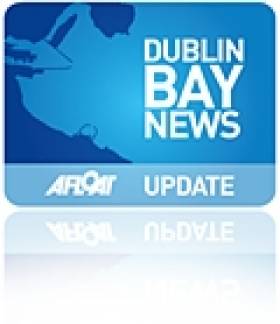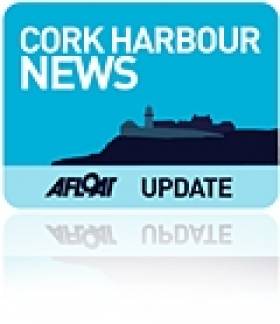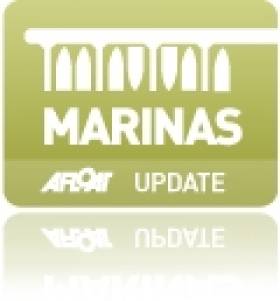Displaying items by tag: Motoryacht
#MotorYacht – A US training ship T.S. Empire State made a 'sail-past' in Dublin Bay this morning, however Dublin Port welcomed Katrion, an impressive three-decked 38m motoryacht, writes Jehan Ashmore.
Featuring a Jacuzzi high up on the uppermost deck above the bridge, the Cayman Islands flagged motoryacht is currently advertised for sale through www.y.co for €12,900,000.
She had docked at the 100-berth Poolbeg Yacht Boat Club & Marina having sailed overnight from Waterford. Beforehand she had cruised along the south and south-west coast in recent weeks.
The Georgetown registered vessel built in 2003 is from the Dutch yard of Feadship - which has completed more than 250 such luxurious vessels for wealthy clients globally.
Her interiors are by the hand of Michael Mcquiston / Art-Line Interiors and her last refit is understood to have been in 2008.
Guests have the use of four staterooms, a main salon, living and dining room spaces. Outdoor dining is available on the spacious deck and aft-decks.
Further luxurious facilities are to be found in accommodation for 8-guests, with a master bedroom and master-bathroom, a VIP-guestroom, guest-double and a guest twin. A crew of 7 cater for the needs of discerning clientele.
It is also undestood that her main engines of 2 X 620 HP generate a cruising speed of 11 knots though is capable of 14 knots.
Should dry-land be yearned for after travelling across Ocean's, in which she has a range of 3,000 nautical miles, there are custom-bikes already on board and an awaiting high-speed tender to whisk you ashore.
#LuxuryFeadship - A luxury motoryacht the Katrion (2003/401grt) is berthed at Cork City Marina, the 10-guest, 38.6m Feadship built vessel is advertised for sale for just shy of €13m, writes Jehan Ashmore.
The Cayman Islands flagged Feadship, a Dutch yard with more than 250 superyachts launched, has been in port for around a week though it is understood the motoryacht completed in 2003 is to head to Dingle.
Visitors such as the size of Katrion are accommodated on the outside berth of the Cork City Marina pontoon, where larger craft drawing up to 4m are moored alongside. The handsome and well proportioned-looking visitor (click for further details) has a draft of 2.5m.
Cork City Marina has 150m length of berthage which occupies an area between South Custom House Quay and Albert Quay. At the adjoining quay heading downriver are the more frequently used South Jetties from where commercial shipping docks close to the city-centre.
An example is Arklow Fortune (2007/2,998grt), which today is berthed at the privately owned quayside which mainly is used for grain imports to supply the nearby silos.
Other merchant vessels can also berth on the far side along the northern channel of the River Lee, though such activity is moreso for visiting vessels, among them Naval ships or those requiring lay-over periods.
One of the largest ships in recent years to berth along this stretch was at Horgan Quay, where Fastnet Line's Julia, the former Cork-Swansea car-ferry was moored in advance to starting the Welsh link. Currently she serves as a floating accommodation ship for a wind-farm installation off Cumbria.
Fortunate Sun Joins Bikini Registered Motoryacht to List of Poolbeg Marina Visitors
#MotorYacht – The impressive 177 foot charter motoryacht M.Y. Fortunate Sun is paying a visit to Poolbeg Marina, Dublin Port and as previously reported she called last week to Cork City Marina, writes Jehan Ashmore.
Constructed with a steel-hull the 851 tonnes yacht has luxurious facilities for 10 guests accommodated in 7 suites and has a crew of 12 crew. The Poolbeg Yacht & Boat Club;s 100-berth marina has seen similar vessels moor along the outer pontoon, among them the 87 foot Bikini registered Cary Ali which could take 8 guests.
In addition the marina which caters for local yachts and pleasure craft also welcomes craft to attend events. Notably, the Old Gaffers Association's 50th Anniversary that was held in June.































































